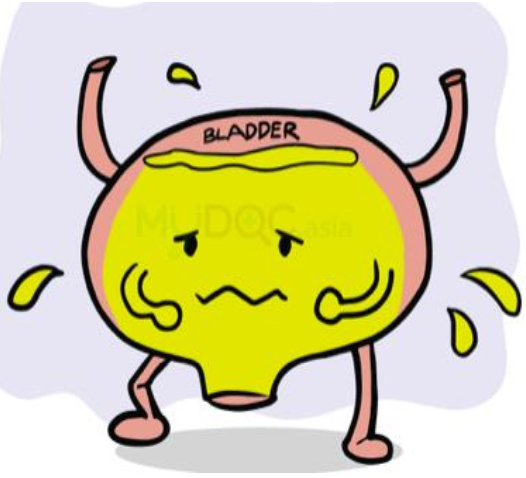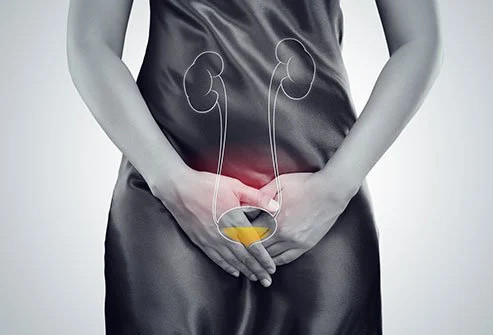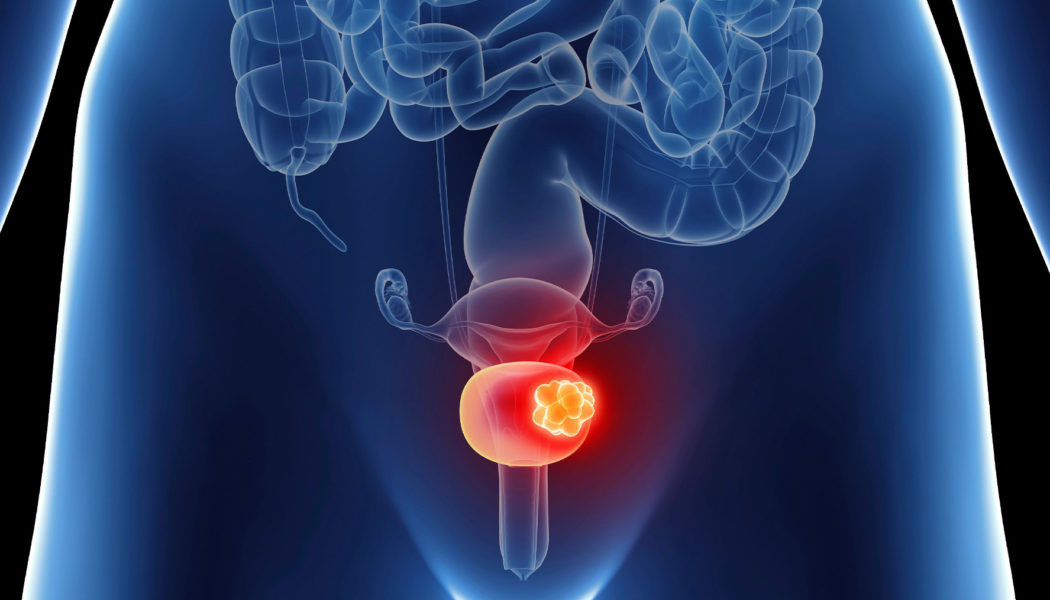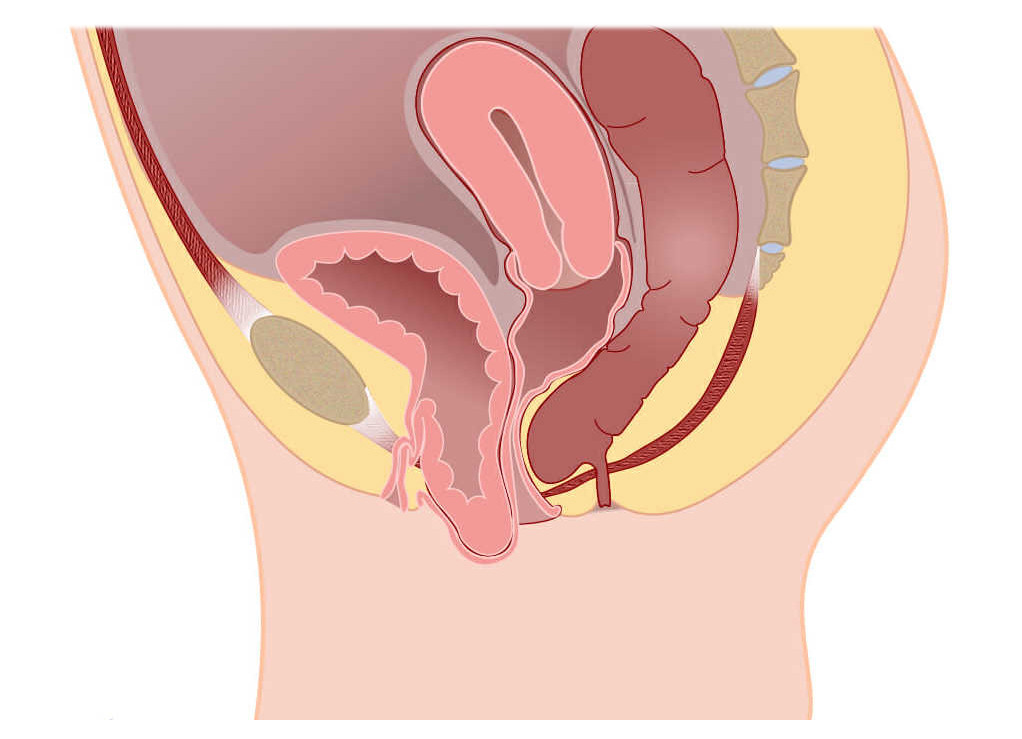Definisi
Retensio urin adalah kondisi ketika kandung kemih tidak dapat mengosongkan semua urin yang ditampung keluar dari tubuh. Kandung kemih adalah bagian dari sistem perkemihan dan bekerja menampung urin dari ureter. Saat urin di kandung kemih sudah penuh, otak akan mendapatkan sinyal untuk mengosongkan kandung kemih. Otak akan memerintahkan otot di sekitar kandung kemih untuk menekan urin menuju uretra dan keluar dari tubuh.
Retensio urin dapat terjadi secara tiba-tiba (akut) atau jangka panjang (kronik). Akut berarti terjadi mendadak dan gejala yang dirasa langsung berat. Kronik berarti kondisi terjadi dalam waktu lama dan gejala muncul perlahan. Retensio urin akut termasuk ke dalam kasus emergensi, sehingga harus segera berobat ke layanan kesehatan secepatnya. Kondisi ini dapat terjadi pada laki-laki ataupun perempuan dan dapat disebabkan karena adanya sumbatan, penggunaan obat tertentu, atau gangguan saraf.
Penyebab
Retensio urin dapat terjadi karena berbagai penyebab. Beberapa penyebab hanya dapat terjadi pada laki-laki atau perempuan. Sementara penyebab lain dapat terjadi pada keduanya. Penyebab retensio urin yaitu :
- Sumbatan. Yang dimaksud dengan sumbatan adalah sesuatu yang menghalangi urin keluar dari tubuh. Penyebab sumbatan bervariasi seperti pembesaran kelenjar prostat pada laki-laki, melemahnya otot kandung kemih sehingga jatuh ke vagina pada perempuan (sistokel), atau melemahnya rektum pada perempuan (rektokel), jatuhnya rahim hingga menekan kandung kemih pada perempuan (prolapse uteri), adanya batu saluran kemih, penyempitan saluran uretra akibat cedera (striktur uretra), tumor atau massa di perut atau panggul, dan bekuan darah di uretra.
- Penggunaan obat-obatan tertentu. Seperti, obat antihistamin, opioid, antispasmodik, antidepresan trisiklik, NSAIDS, relaksan otot, pseudoefedrin, obat penyakit parkinson, antipsikotik, dan amfetamin.
- Gangguan saraf. Pengosongan kandung kemih dan pengeluaran urin melalui uretra terjadi karena otak memberikan perintah agar otot di sekitar kandung kemih dan uretra bekerja. Terhambatnya hantaran saraf atau masalah di otak akan menimbulkan gangguan pengosongan kandung kemih dan menyebabkan retensio urin. Penyakit yang berkaitan dengan itu adalah stroke, diabetes, sklerosis multiple, trauma tulang belakang dan pelvis, penyakit parkinson, tekanan pada sumsum tulang belakang karena tumor atau massa, dan persalinan pervaginam.
- Infeksi. Pada laki-laki dapat terjadi infeksi prostat yang menyebabkan pembengkakan prostat. Pembengkakan ini akan menekan saluran uretra dan menyumbat aliran urin. Infeksi saluran kemih dan penyakit menular seksual juga dapat menyebabkan pembengkakan uretra atau kandung kemih yang menyebabkan retensio urin.
- Komplikasi dari prosedur bedah. Pada prosedur pembedahan obat bius akan diberikan sebelum dan selama operasi, obat ini akan menyebabkan retensio urin setelah selesai operasi. Jenis operasi yang paling sering dikaitkan adalah operasi penggantian sendi dan operasi tulang belakang. Beberapa prosedur lain seperti sistoskopi (prosedur medis untuk mengetahui penyakit saluran kemih dan kadnung kemih) juga dapat menyebabkan cedera uretra bila tidak dilakukan dengan baik.
Faktor Risiko
Terdapat beberapa faktor yang dapat meningkatkan seseorang berisiko mengalami retensio urin, antara lain:
- Jenis kelamin laki-laki
- Usia tua, terutama laki-laki. Berkaitan dengan pembesaran prostat
- Memiliki penyakit diabetes, stroke, dan masalah saraf
- Konsumsi obat tertentu
- Riwayat prosedur bedah sebelumnya
Gejala
Retensio urin memiliki beberapa variasi gejala. Gejala tergantung pada kondisi akut atau kronik. Retensio urin akut terjadi mendadak dan gejala yang dirasa langsung berat. Kondisi ini harus ditangani secepatnya karena dapat membahayakan. Hal ini terjadi karena kandung kemih akan terus membesar dan tekanan meningkat. Gejala retensio urin akut yaitu :
- Tiba-tiba tidak dapat buang air kecil, meskipun kandung kemih terasa penuh
- Dapat buang air kecil tapi jumlah sangat sedikit
- Nyeri perut bagian bawah atau panggul
Sementara, retensio urin kronik memiliki jangka waktu lebih lama serta gejala yang perlahan memberat. Tumpukan urin yang tersisa di kandung kemih akan meningkat seiring berjalannya waktu. Beberapa gejala retensio urin kronik yang dapat terjadi adalah :
- Kesulitan memulai berkemih
- Buang air kecil lebih dari 8x sehari, kadang terasa ingin buang air kecil segera
- Saat buang air kecil aliran lemah, kecil, dan berhenti sebelum tuntas
- Setelah buang air kecil ada rasa ingin buang air kecil lagi
- Buang air kecil beberapa kali saat malam
- Ada kebocoran urin saat beraktivitas. Karena kandung kemih penuh (terkencing)
- Ada rasa harus buang air kecil mendadak, dan rasa tidak dapat berhenti saat buang air kecil
- Tidak dapat membedakan rasa ingin buang air kecil atau penuh tidaknya kandung kemih
- Rasa tidak nyaman di area panggul
Diagnosis
Diagnosis retensio urin dilakukan dengan wawancara gejala dan pemeriksaan fisik serta penunjang. Dokter akan menanyakan gejala yang dialami dan sejak kapan gejala itu dirasakan. Dokter juga akan menanyakan riwayat penyakit sebelumnya, penggunaan obat sebelumnya, dan riwayat operasi. Pemeriksaan fisik akan dilakukan di bagian perut bawah.
Dokter mungkin melakukan beberapa pemeriksaan khusus seperti pemeriksaan colok dubur pada laki-laki untuk memastikan pembesaran prostat. Terdapat kuesioner yang dapat digunakan dokter untuk memastikan keluhan dalam 1 bulan terakhir. Dokter juga akan melakukan pemeriksaan penunjang seperti :
- Urinalisis. Bertujuan untuk mengevaluasi infeksi dan kelainan lain dalam urin.
- Tes darah. Beberapa indikator yang diperiksa adalah kadar urea, kreatinin, elektrolit, dan gula darah.
- PSA atau prostate-specific antigen. Pemeriksaan khusus untuk mengetahui pembesaran prostat jinak atau ganas. Nilai PSA meningkat menunjukkan adanya kanker prostat.
- Tes urodinamik. Mengevaluasi fungsi kandung kemih menggunakan kateter dengan cara melihat tekanan di kandung kemih saat pengosongan.
- USG kandung kemih. Dilakukan bila ada kecurigaan massa atau kanker di sekitar kandung kemih. Pemeriksaan ini juga berfungsi untuk melihat sisa urin di kandung kemih setelah buang air kecil (postvoid residual)
- MRI atau CT Scan. Dapat dilakukan bila hasil USG tidak memberikan hasil yang memuaskan.
- EMG atau elektromiografi. Dilakukan bila ada kecurigaan gangguan saraf. Menilai aktivitas listrik di otot dan saraf sekitar kandung kemih dan uretra.
- Sistoskopi. Pemeriksaan dengan memasukkan selang kecil berkamera dan senter ke dalam uretra. Untuk mengevaluasi adanya tumor, batu, atau striktur di kandung kemih dan uretra.
Tata laksana
Tata laksana retensio urin dilakukan sesuai dengan penyebab dan kondisi akut atau kronik. Meski begitu, tatalaksana awal adalah mengeluarkan urin dari kandung kemih. Kemudian menangani penyebab retensio urin. Pada kasus retensio urin akut, pemasangan kateter dilakukan melalui uretra untuk mengosongkan kandung kemih. Bila tidak dapat dilakukan, dokter dapat memasang kateter suprapubik. Dokter akan memonitor kondisi setelah pemasangan kateter, karena pengosongan kandung kemih yang terlalu cepat dapat menimbulkan masalah kesehatan lainnya. Pada kasus retensio urin kronik, pemasangan kateter juga akan dilakukan. Tetapi penggunaan kateter jangka panjang dapat meningkatkan risiko terjadinya infeksi, sehingga perlu dilakukan penggantian kateter berkala.
Tata laksana untuk menangani penyebab yang dapat diberikan adalah :
- Pada pembesaran prostat. Obat untuk mengatasi pembesaran prostat, seperti obat golongan alfabloker dan 5-alfa reductase inhibitor. Obat ini bekerja mengecilkan prostat. Dapat juga dilakukan prosedur operasi untuk membuka prostat.
- Pada infeksi saluran kemih dapat diberikan antibiotik.
- Pada striktur uretra dapat dilakukan pembukaan uretra dengan kateter dan balon. Prosedur ini dilakukan untuk membuka striktur uretra dengan memasukkan selang kecil yang perlahan dilebarkan agar urin dapat keluar. Kateter balon dapat dipertahankan lama di uretra.
- Batu saluran kemih. Menggunakan selang kecil dengan lampu dan kamera yang dimasukkan ke uretra hingga kandung kemih. Melihat sumbatan seperti batu dan dapat membantu mengeluarkannya.
- Pada masalah saraf dapat menggunakan kateter dan pengobatan terkait masalah saraf tersebut.
- Pada perempuan dengan sistokel, dapat diedukasi untuk melakukan latihan yang memperkuat otot dinding panggul. Dapat juga dilakukan pemasangan ring untuk mempertahankan kandung kemih. Operasi penarikan kandung kemih dapat dilakukan pada kasus berat.
Komplikasi
Komplikasi pada retensio urin cukup beragam. Komplikasi yang dapat terjadi setelah penanganan adalah hipotensi (tekanan darah rendah) dan hematuria (kencing berdarah). Hal ini berkaitan dengan pengeluaran urin terlalu cepat yang dapat menyebabkan hilangnya garam dan cairan sehingga tubuh akan mengalami dehidrasi dan tekanan darah rendah. Kondisi akan memberat bila tidak diawasi oleh dokter. Kadar cairan dan elektrolit harus diperhatikan. Dokter akan menyarankan tetap menggunakan kateter untuk memonitor jumlah urin yang keluar dan menunggu sampai jumlah kembali normal.
Selain itu, penggunaan kateter lama juga akan menyebabkan komplikasi berupa :
- Infeksi saluran kemih yang dapat berkembang ke aliran darah
- Luka dan kerusakan saluran uretra
- Restriksi uretra (uretra menyempit) yang dapat menyumbat urin
Komplikasi juga dapat terjadi pada kondisi retensio urin kronik bila tidak ditangani dengan baik. Kondisi ini menyebabkan kerusakan ginjal karena urin tidak dikeluarkan dengan baik. Beberapa komplikasi yang dapat terjadi meliputi :
- Tekanan darah tinggi
- Pembengkakan tubuh akibat penumpukan cairan, terutama di kaki (edema)
- Kerusakan ginjal hingga gagal ginjal
Pencegahan
Retensio urin kadang tidak dapat dicegah. Meski begitu, ada beberapa cara pencegahan yang dapat dilakukan yaitu :
- Menjaga kebersihan organ intim
- Mengkonsumsi obat sesuai yang diresepkan
- Olahraga untuk mengencangkan otot dinding panggul
- Makan makanan dengan gizi seimbang
- Mengontrol penyakit yang dimiliki seperti diabetes
Kapan Harus ke Dokter?
Sebaiknya Anda segera berobat ke dokter bila mengalami perubahan saat buang air kecil. Bila Anda mengalami gejala retensio urin akut, segeralah berobat agar dapat ditangani dengan cepat. Lakukan pemeriksaan rutin bila Anda memiliki faktor risiko.
Mau tahu informasi seputar penyakit lainnya? Cek di sini, ya!
- dr Nadia Opmalina
Urinary Retention: Causes, Diagnosis & Treatment. Cleveland Clinic. (2022). Retrieved 29 June 2022, from https://my.clevelandclinic.org/health/diseases/15427-urinary-retention.
Urinary Retention | NIDDK. National Institute of Diabetes and Digestive and Kidney Diseases. (2022). Retrieved 29 June 2022, from https://www.niddk.nih.gov/health-information/urologic-diseases/urinary-retention.
Jewell, T. (2021). Urinary Retention: Causes, Treatment, and More. Healthline. Retrieved 29 June 2022, from https://www.healthline.com/health/urinary-retention.
SELIUS, B., & SUBEDI, R. (2022). Urinary Retention in Adults: Diagnosis and Initial Management. Aafp.org. Retrieved 29 June 2022, from https://www.aafp.org/pubs/afp/issues/2008/0301/p643.html.
Dougherty, J., & Aeddula, N. (2022). Male Urinary Retention. Ncbi.nlm.nih.gov. Retrieved 29 June 2022, from https://www.ncbi.nlm.nih.gov/books/NBK538499/.












